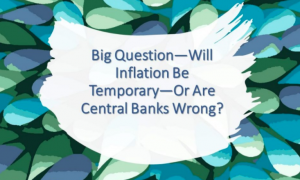50/15/5: A saving and spending rule of thumb
Saving can be hard, and overwhelming! Here is one great method to improve your savings.
It isn’t about managing every penny. Track your money using three categories.
Key takeaways
- Consider allocating no more than 50% of take-home pay to essential expenses.
- Try to save 15% of pre-tax income (including employer contributions) for retirement.
- Save for the unexpected by keeping 5% of take-home pay in short-term savings for unplanned expenses.
“Budget.” Does anyone like that word? How about this instead: the 50/15/5 rule? It’s our simple rule of thumb for saving and spending: Aim to allocate no more than 50% of take-home pay to essential expenses, save 15% of pre-tax income for retirement savings (RRSP), and keep 5% of take-home pay for short-term savings. (Your situation may be different, but you can still use our rule of thumb as a starting point.)
Why 50/15/5? We analyzed hundreds of scenarios in order to create a saving and spending guideline that can help people save enough to retire. Our research found that by sticking to this guideline, there is a good chance you can maintain your financial stability now and keep your current lifestyle in retirement.
Essential expenses: 50%
Some expenses simply aren’t optional: you need to eat and you need a place to live. Consider allocating no more than 50% of take-home pay to “must have” expenses, such as
- housing: mortgage, rent, property tax, utilities (electricity, etc.), homeowner’s/renter’s insurance and condo/home association fees
- food: groceries only; do not include takeout or restaurant meals, unless you really consider them essential, i.e., you never cook and always eat out
- health care: out-of-pocket expenses (e.g., prescriptions, co-payments)
- transportation: car loan/lease, gas, car insurance, parking, tolls, maintenance and commuter fares
- child care: day care, tuition and fees
- debt payments and other obligations: credit card payments, student loan payments, child support, alimony and life insurance
Keep it below 50%. Just because some expenses are essential doesn’t mean they’re not flexible. Small changes can add up, such as turning the heat down a few degrees in the winter (and turning your AC up a few degrees in the summer), buying – and stocking up on – groceries when they are on sale and bringing lunch to work. Also consider driving a more affordable car, carpooling or taking public transportation.
If you need to significantly reduce your living expenses, consider a less expensive home or apartment. There are many other ways you can save. Take a look at which essential expenses are most important, and which ones you may be able to cut back on.
Retirement savings: 15%
It’s important to save for your future, no matter how young or old you are. Why? Pension plans are rare. In fact, we estimate that about 45% of retirement income will need to come from savings. That’s why we suggest people consider saving 15% of pre-tax household income for retirement. That includes their contributions and any matching or profit sharing contributions from an employer. Starting early, saving consistently and investing wisely is important, as is saving in tax-advantaged retirement savings accounts such as an RRSP.
How to get to 15%: If contributing that amount right now is not possible, check to see if your employer has a program that automatically increases contributions annually until a goal is met. Another strategy is to start by contributing at least enough to meet an employer’s matching amount; then, if you get a raise or annual bonus, add all or part of these funds to your workplace savings plan or individual retirement account until you have reached the annual contribution limit.
Short-term savings: 5%
Everyone can benefit from having an emergency fund. An emergency, like an illness or job loss, is bad enough, but not being prepared financially can only make things worse. A good rule of thumb is to have enough put aside in savings to cover three to six months of essential expenses. Think of emergency fund contributions as a regular bill every month, until there is enough built up.
While emergency funds are meant for more significant events, like job loss, we also suggest saving a percentage of your pay to cover smaller unplanned expenses. Who hasn’t been invited to a wedding – or several? Cracked the screen on a smartphone? Had a flat tire? In addition to those, there are certain categories of expenses that are often overlooked: for example, maintenance and repairs of cars, field trips for kids, co-pays for prescriptions, holiday gifts and Halloween costumes, to name a few.
Setting aside 5% of monthly take-home pay can help with these “one off” expenses. It’s good practice to have some money set aside for the random expenses: that way, you won’t be tempted to tap into your emergency fund, or tempted to pay for one of these things by adding to an existing credit card balance. Over time, those balances can be hard to pay off. However, if you pay the entire credit card balance every month, and get points or cash back for purchases, using a credit card for one-off expenses may make sense.
How to get to 5%: Having this money automatically taken out of a paycheque and deposited in a separate account just for short-term savings can help a person reach this goal.
What next?
Our guidelines are intended to serve as a starting point. It is important to evaluate your situation and adjust these guidelines as necessary. If you’re close to the 50/15/5 target spending and saving amounts, good job! And for those staying within the guidelines, any remaining income is yours to save or spend as you would like. Some ideas: First, pay down high-interest debt. For other goals, like paying for a child’s college or wedding, you could use the remaining income to save for them. And, finally, for those who want to retire early, or haven’t been saving diligently, putting it toward retirement savings may make sense.
The good news is that it isn’t about micromanaging every penny. Analyzing current spending and saving based on our three categories can give you control and confidence. And remember, almost everyone’s financial situation will change over time. A new job, marriage, children and other life events may change cash flow. It’s a good idea to revisit spending and saving regularly, particularly after any major life events.
Published by Fidelity Investments








